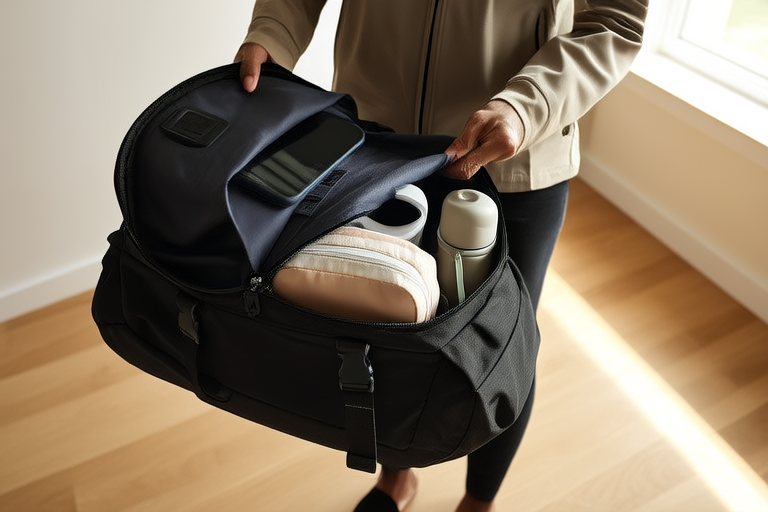Introduction: Why Packing Light Matters
Traveling light is not just about convenience; it’s about freedom. When you pack efficiently, you reduce the risk of lost luggage, save money on baggage fees, and ensure that you can move quickly from one place to another. Whether you’re heading off for a weekend getaway or embarking on a month-long adventure, packing smart is key to enjoying your trip without unnecessary stress. In this guide, we’ll explore how to pack light while ensuring you have all the essentials you need for a comfortable journey.
Section 1: Prioritize Your Must-Have Items
Start with a Minimalist Approach
Before you start packing, take a moment to reflect on what you really need. Many travelers fall into the trap of overpacking because they’re unsure what items they might need. Instead, focus on the essentials—items that will help you survive and thrive in any situation. These include:
- Clothing: Pack versatile pieces that can be mixed and matched. Opt for lightweight fabrics like cotton or linen.
- Toiletries: Bring travel-sized versions of your favorite products. Don’t forget basics like toothpaste, deodorant, and sunscreen.
- Electronics: Ensure you have chargers, adapters, and portable power banks. Consider investing in a multi-port adapter to keep all your devices charged simultaneously.
Use a Packing List
Creating a packing list is one of the best ways to avoid forgetting something important. Here’s a sample checklist to get you started:
- Clothes: 3 tops, 2 bottoms, 1 jacket, 1 swimsuit (if applicable)
- Footwear: 2 pairs (one casual, one for walking)
- Toiletries: Travel-sized shampoo, conditioner, soap, toothbrush, etc.
- Documents: Passport, ID, tickets, travel insurance
- Electronics: Phone, charger, headphones, camera (optional)
By sticking to this list, you’ll stay organized and avoid the temptation to add unnecessary items.
Section 2: Master the Art of Compression
Utilize Packing Cubes
Packing cubes are a game-changer for anyone looking to pack smarter. They allow you to organize your belongings efficiently, making it easier to find what you need when you arrive at your destination. Here’s how to use them effectively:
- Sort Your Items: Group similar items together (e.g., all shirts in one cube, all pants in another).
- Roll Your Clothes: Rolling clothes instead of folding them saves space and prevents wrinkles.
- Compress: Once your clothes are rolled, gently compress each cube to maximize space.
Fold Strategically
If you prefer not to use packing cubes, there are still ways to fold your clothes more efficiently:
- Shirts: Roll shirts tightly to save space.
- Jeans: Fold jeans lengthwise and roll them up.
- Socks: Stuff socks into shoes to prevent them from getting wrinkled.
By mastering these techniques, you can fit more into your suitcase without sacrificing comfort or style.
Section 3: Streamline Your Electronics
Choose Versatile Devices
In today’s digital age, electronics are an essential part of travel. However, carrying too many gadgets can weigh down your luggage. To streamline your tech, consider the following:
- Smartphone: Your smartphone can serve as a camera, GPS, and even a wallet with mobile payment options.
- Portable Power Bank: Invest in a high-capacity power bank to keep your devices charged on the go.
- Universal Adapter: A universal adapter will work in most countries, eliminating the need for multiple converters.
Protect Your Devices
While packing light is important, so is protecting your electronics. Consider using padded bags or cases to safeguard your devices during transit.
Section 4: Practical Tips for On-the-Go Essentials
Stay Hydrated
Hydration is crucial, especially if you’re traveling to a hot climate. Carry a reusable water bottle to refill throughout the day. Many airports and hotels offer filtered water stations, so you won’t have to purchase bottled water.
Keep Snacks Handy
Travel delays can be frustrating, but having snacks on hand can make the experience more bearable. Pack non-perishable items like nuts, granola bars, or dried fruit. Avoid foods that require refrigeration or have a strong smell.
Pack a First Aid Kit
Accidents happen, and it’s always good to be prepared. Include basic items like band-aids, antiseptic wipes, pain relievers, and allergy medication in your first aid kit.
Section 5: Real-Life Application and Action Steps
Case Study: A Weekend Getaway
Let’s imagine you’re planning a weekend trip to the beach. Here’s how you can apply the tips mentioned above:
- Packing List:
- 2 tops, 1 pair of shorts, 1 swimsuit, 1 towel, 1 pair of flip-flops.
- Essentials: Sunscreen, sunglasses, hat, and a reusable water bottle.
- Compression: Use packing cubes to roll and compress your clothes.
- Electronics: Bring your smartphone, portable charger, and universal adapter.
- On-the-Go Essentials: Pack snacks, a reusable water bottle, and a small first aid kit.
Action Steps
- Review Your Packing List: Before you leave, review your packing list to ensure you haven’t forgotten anything.
- Practice Rolling and Compressing: Spend some time practicing rolling your clothes and compressing them with packing cubes.
- Test Your Electronics: Make sure all your chargers and adapters work before you leave.
Conclusion: Embrace Lightweight Travel
Packing light and smart doesn’t mean sacrificing comfort or safety. By prioritizing your must-have items, mastering compression techniques, and streamlining your electronics, you can travel with ease and confidence. Remember, the goal is not just to carry less weight but to enhance your travel experience. So, the next time you pack for a trip, follow these tips and enjoy the freedom of traveling light. Happy travels!
